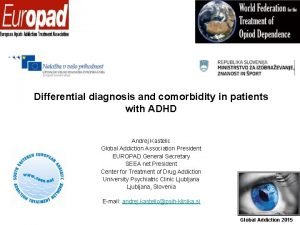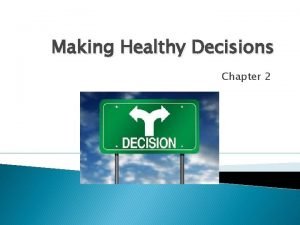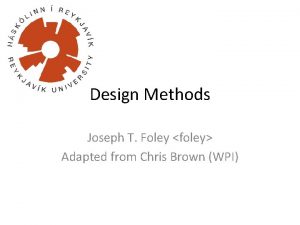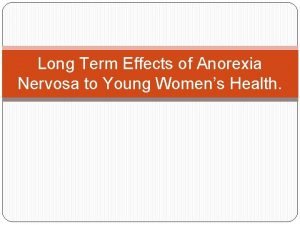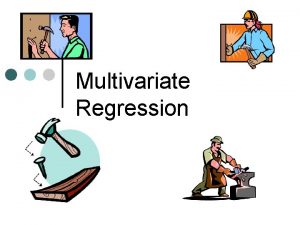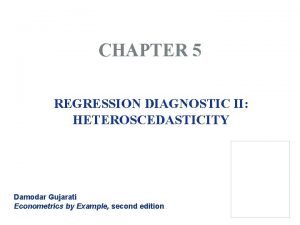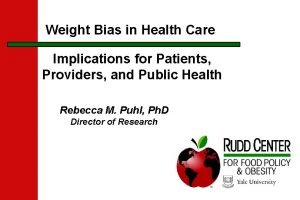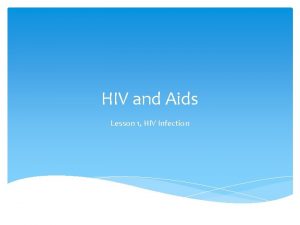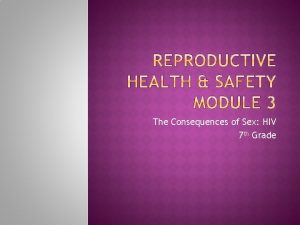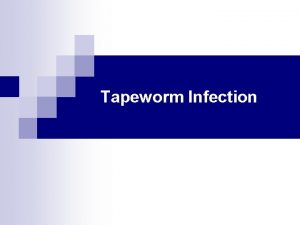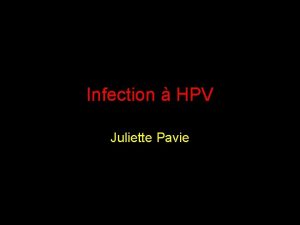The Consequences of Sex HIV Infection Module 2

























































- Slides: 57

The Consequences of Sex: HIV Infection Module 2

Discussing HIV and AIDS

HIV/AIDS FRAME How do people get HIV? (3 ways) What common body fluids can transmit HIV? How is HIV not transmitted? Who is at risk? How can you prevent HIV? How can you reduce your risk of HIV?

How people get HIV: §Vaginal or anal sex. §Needles for injecting drugs, vitamins, steroids or hormones, or for tattooing, piercing or any other reason. §Mother to child either before or during birth.

Common body fluids that transmit HIV: Blood, semen, and vaginal and rectal fluids. HIV NOT transmitted by: Casual, day-to-day contact (touching, coughing or sneezing) or air.

People are at risk for HIV if they: § Have sex with someone who’s had other partners. § Have sex without using a latex condom or other protection. § Share needles or syringes to inject drugs or had sex with someone who has. § Share needles or other sharp objects for tattooing, piercing or any other reason.

Prevent contracting HIV by: § Not having vaginal, anal or oral sex. § Never injecting drugs or share needles for any reason.

Reduce your risk of contracting HIV by § Using protection each and every time for vaginal, anal or oral sex. § Avoiding having multiple or overlapping partners. § Discussing HIV with a partner. § Asking about past or present risk behaviors. § Getting tested for HIV. § Taking medication, if needed. § Not engaging in sexual behavior when using alcohol, marijuana or other drugs that impair judgment–being high can lead to unsafe sex or other drug use.

KEY WORDS HIV: Human Immunodeficiency Virus AIDS: Acquired Immunodeficiency Syndrome Immune System HIV Test Latex Condoms Window Period Treatment

HIV (Human Immunodeficiency Virus) § Damages the body's immune system, which normally protects the body from disease. § The immune system becomes weaker until it can no longer fight off different types of infections. § There is no cure for HIV, but treatments can be started while the person still feels healthy. § People with HIV can lead long and healthy lives.

HIV & AIDS HIV is the virus that enters the body and damages the immune system. People who are taking medicine to treat HIV may be in this stage for several decades, although they can still transmit HIV to others. AIDS is the condition that develops as a result of the damage done to the immune system.

Immune System § The immune system is the body’s defense against infections and diseases. § HIV attacks specialized white blood cells. § As the number of properly working white blood cells decreases, the immune system becomes weaker until it can no longer fight off different types of infections.

HIV Tests § Three types of tests available: • Antibody test • Combination or fourth generation tests • Nucleic acid tests (NAT) § It may take 2 to 6 weeks after exposure before HIV antibodies and antigens can be detected in a person’s body. § NATs detect HIV fastest by looking for HIV in the blood in 7 to 28 days.

Common Tests for HIV Available Over the Counter: § Home Access requires a finger prick to collect a blood sample. The person sends the sample to a licensed laboratory and gets the results by phone as early as the next business day. § This is an anonymous test. § Anyone who tests positive is immediately offered a follow-up test, counseling and referral to treatment.

Common Tests for HIV Available Over the Counter: • The Ora. Quick In-Home HIV Test provides results in 20 minutes and involves swabbing inside the mouth to get an oral fluid sample and testing this sample with a test kit. • A positive test needs a follow-up test at the testing site, counseling and other referrals. HIV infection may show up later after exposure in an oral fluid test than a blood test, because the level of antibody in oral fluid is naturally lower.

The window period § The time between when a person first gets HIV and when a test can accurately detect it. § This varies from person to person and depends on the type of test done. § During the window period a person can transmit HIV to others.

The importance of early treatment § If people with HIV remain in medical care and continue to take their medicines to keep low viral loads, they can live long, healthy lives.

The importance of condom use § External and internal condoms prevent the exchange of body fluids such as semen and vaginal or rectal secretions.

The Subject is HIV

Video: The Subject is HIV https: //www. youtube. com/ watch? v=BXc 2 Yg. Jor. Kg

Discussion: § What did they mean when they said, “you can’t get HIV from things you share? ” § You can’t get HIV from casual contact (e. g. , combs, toilet seats, telephones, eating after someone) § Use condoms every time you have anal, oral or vaginal sex. § What were the messages discussed between the girls in the library? § What were the messages discussed between the guys in biology class?

Myths and Facts about HIV

Myth vs. Fact

Myth vs. Fact Having sex with someone who uses injection drugs is a way a person can get HIV. Having anal sex increases your chances of getting HIV. If you hug someone with HIV you can get it. You can tell by looking at people whether they have HIV. You can get HIV by sharing a needle with a drug user.

FACTS: Having sex with someone who uses injection drugs is a way a person can get HIV. Having anal sex increases your chances of getting HIV. You can get HIV by sharing a needle with a drug user.

Myth vs. Fact Having an untreated STI can increase your chances of getting HIV. AIDS is the stage of HIV in which your body cannot fight off diseases. HIV can be transmitted in blood, semen, vaginal secretions, and rectal fluids. Having unprotected sex is one way of getting HIV.

FACTS: • Having an untreated STI can increase your chances of getting HIV. • AIDS is the stage of HIV in which your body cannot fight off diseases • HIV can be transmitted in blood, semen, vaginal secretions, and rectal fluids. • Having unprotected sex is one way of getting HIV.

Myth vs. Fact Having AIDS makes you more likely to get other diseases. AIDS can be cured. AIDS is caused by a virus. If a pregnant woman has HIV, there is a chance she may give it to her baby. You can avoid getting HIV by exercising regularly.

FACTS: • Having AIDS makes you more likely to get other diseases. • AIDS is caused by a virus. • If a pregnant woman has HIV, there is a chance she may give it to her baby.

Myth vs. Fact You have a bigger chance of getting HIV if you have sex with many people. You can get HIV from using someone else’s comb or hairbrush. Using protection during sex reduces the chance of getting a sexually transmitted infection, including HIV. Early treatment can help people with HIV stay healthy. You can get HIV by eating certain foods

FACTS: • Using protection during sex reduces the chance of getting a sexually transmitted infection, including HIV. • You have a bigger chance of getting HIV if you have sex with many people. • Early treatment can help people with HIV stay healthy.

HIV Risk Continuum

HIV Risk Continuum Instructions: Green Light = No Risk Yellow Light = Some Risk Red Light = Hig Risk (Unsafe) (proceed with caution)

HIV Risk Continuum Risk Behavior: Vaginal sex without a condom

HIV Risk Continuum Risk Behavior: Dry kissing

HIV Risk Continuum Risk Behavior: Having protected sex with a person who is having sex with other people

HIV Risk Continuum Risk Behavior: Romantic conversation

HIV Risk Continuum Risk Behavior: Oral stimulation of the penis without a condom

HIV Risk Continuum Risk Behavior: Sharing eating utensils with someone who has HIV

HIV Risk Continuum Risk Behavior: Sharing needles and syringes

HIV Risk Continuum Risk Behavior: Anal sex with a condom and water-based lubricant

HIV Risk Continuum Risk Behavior: Self-masturbation

HIV Risk Continuum Risk Behavior: Mutual masturbation

HIV Risk Continuum Risk Behavior: Practicing abstinence

HIV Risk Continuum Risk Behavior: Vaginal sex without a condom

HIV Risk Continuum Risk Behavior: Massage

HIV Risk Continuum Risk Behavior: Having sex with multiple partners without using a condom

HIV Risk Continuum Risk Behavior: Oral stimulation of the vulva (female genitals) with a dental dam (latex barrier)

HIV Risk Continuum Risk Behavior: Anal sex without a condom

HIV Risk Continuum Risk Behavior: Having protected sex with multiple partners

HIV Risk Continuum Risk Behavior: Having sex without using a condom with a person who injects drugs

HIV Risk Continuum Risk Behavior: Sexual fantasy

HIV Risk Continuum Risk Behavior: Touching someone who has HIV

HIV Risk Continuum Risk Behavior: Flirting

HIV Risk Continuum Risk Behavior: Body rubbing/grinding (with clothes on/no exchange of body fluids)

HIV Risk Continuum Risk Behavior: Hugging

HIV Risk Continuum Risk Behavior: Having sex with only one partner (monogamous)
 Sex sex sex
Sex sex sex Kurt bumby
Kurt bumby Secondary sexual characters
Secondary sexual characters Greenhouse sex
Greenhouse sex Sex sex sex
Sex sex sex Heterogametic
Heterogametic Sex determination and sex linkage
Sex determination and sex linkage Once a sex offender always a sex offender
Once a sex offender always a sex offender Sex determination and sex linkage
Sex determination and sex linkage C device module module 1
C device module module 1 Adhd or bpd
Adhd or bpd Romeo and juliet act 4 summary
Romeo and juliet act 4 summary Measures of noise pollution
Measures of noise pollution Linking words for consequences
Linking words for consequences Shedules of reinforcement
Shedules of reinforcement Weigh the consequences
Weigh the consequences Consequences of enolization
Consequences of enolization Unintended consequences
Unintended consequences Air pollution consequences
Air pollution consequences Consequences of horseplay
Consequences of horseplay Consequences of incorporation
Consequences of incorporation Consequences of variation
Consequences of variation Cause and effect of inflation
Cause and effect of inflation Health consequences of anorexia
Health consequences of anorexia Berlin blockade summary
Berlin blockade summary Ideas have consequences bad ideas have victims
Ideas have consequences bad ideas have victims Why was the truman doctrine created
Why was the truman doctrine created In your notebook write consequences of these situations
In your notebook write consequences of these situations Tardiness in education
Tardiness in education Consequences of underage drinking
Consequences of underage drinking Decide process
Decide process Rising food prices causes and consequences
Rising food prices causes and consequences Unintended consequences
Unintended consequences Les conséquences de l'amertume
Les conséquences de l'amertume Consequences of inflation
Consequences of inflation Choices have consequences philosophy
Choices have consequences philosophy Consequences of the fall
Consequences of the fall Consequences of the truman doctrine
Consequences of the truman doctrine Cost of unemployment
Cost of unemployment Consequences of bugs in stm
Consequences of bugs in stm Ndansi kumalo
Ndansi kumalo Consequences of the 100 years war
Consequences of the 100 years war Bad manners essay
Bad manners essay Consequences of disobedience in the bible
Consequences of disobedience in the bible Consequences of sin according to genesis
Consequences of sin according to genesis 5 unsafe attitudes and consequences
5 unsafe attitudes and consequences What is sin and its consequences
What is sin and its consequences Intrinsic rewards are psychic and self-granted.
Intrinsic rewards are psychic and self-granted. Anorexia nervosa consequences long term
Anorexia nervosa consequences long term Consequences of heteroscedasticity
Consequences of heteroscedasticity Cohesive devices used to signal consequences
Cohesive devices used to signal consequences Consequences of heteroscedasticity
Consequences of heteroscedasticity Consequences of the wicked
Consequences of the wicked Consequences
Consequences What are the social classes in the united states
What are the social classes in the united states Obesity health consequences
Obesity health consequences Poem about choices and consequences
Poem about choices and consequences Consequences of overfishing
Consequences of overfishing










